1lumen selects and reviews products personally. We may earn affiliate commissions through our links, which help support our testing.
Sofirn TF84 review
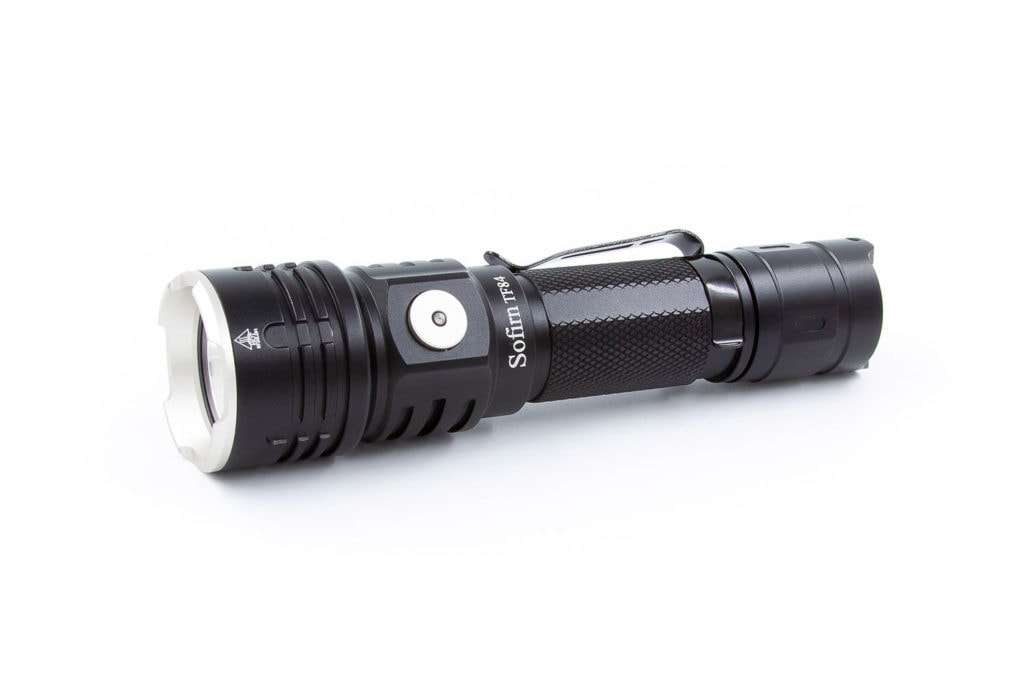
Sofirn TF84 specifications
| Brand/model | Sofirn TF84 |
|---|---|
| LED | LH351D |
| Lumens | 1,200 lm |
| Beam intensity | 10,583 cd |
| Battery config. | 1*18650/2*CR123A |
| Material | Aluminum |
| Modes | 5 |
| Blinkies | Strobe, SOS, Beacon |
| Reflector | Smooth |
| Waterproof | IPX7 |
| Review date | May 2021 |
Introduction:
Today I’m taking a look at the Sofirn TF84 – a name that keeps tripping me up because it’s outside the usual model names I’ve become used to with Sofirn. It’s also called the C07 for some reason, but I believe TF84 is the preferred nomenclature.
This is their first true “tactical” light – there’s a lot of other lights they offer that have a heady nod towards tactical functionality, but this is the first to take a deep dive.
How does the TF84 compare to the competition? Let’s find out.
Package quality.
The packaging that the Sofirn TF84 arrived in is a plain cardboard box with a sticker on the end with the model and kit details, similar to the SP36 boxes. I’m actually quite satisfied with this – an unpretentious box that lets its contents speak for itself.
Inside the box I find:
- The Sofirn TF84 itself
- inside, a Sofirn-branded 3000mAh button-top 18650
- Remote tailcap
- Spare o-rings
- Warranty Card
- User Manual (important to read it!)
- USB-A to USB-C cable
As with a lot of the Sofirn kits, absolutely everything you need to get started with the light. Pop it on charge, and when it’s done, away you go.
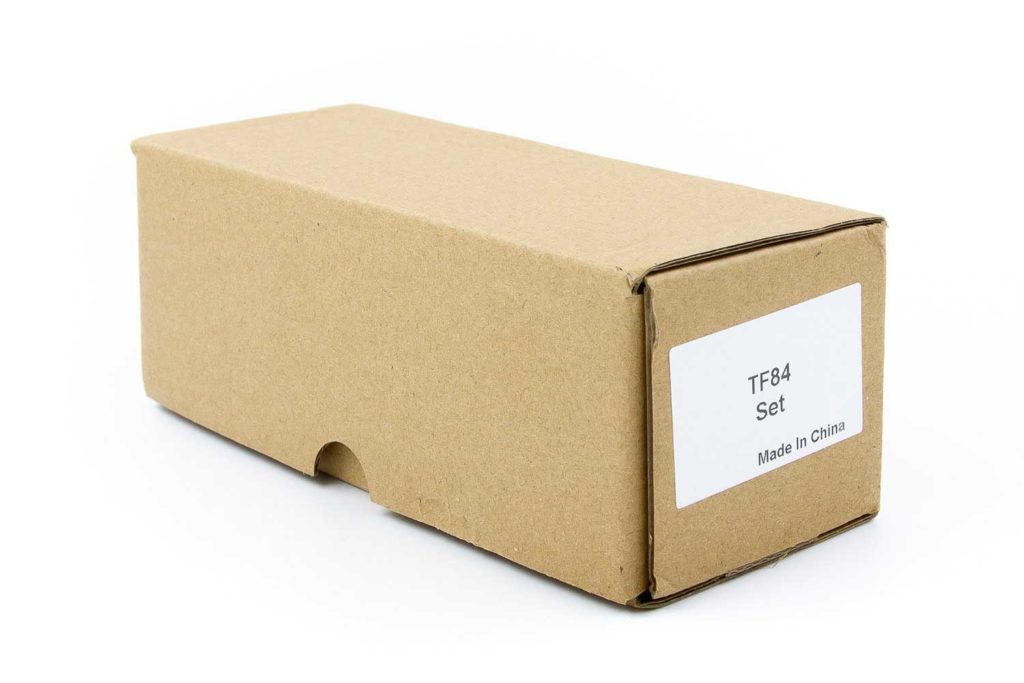
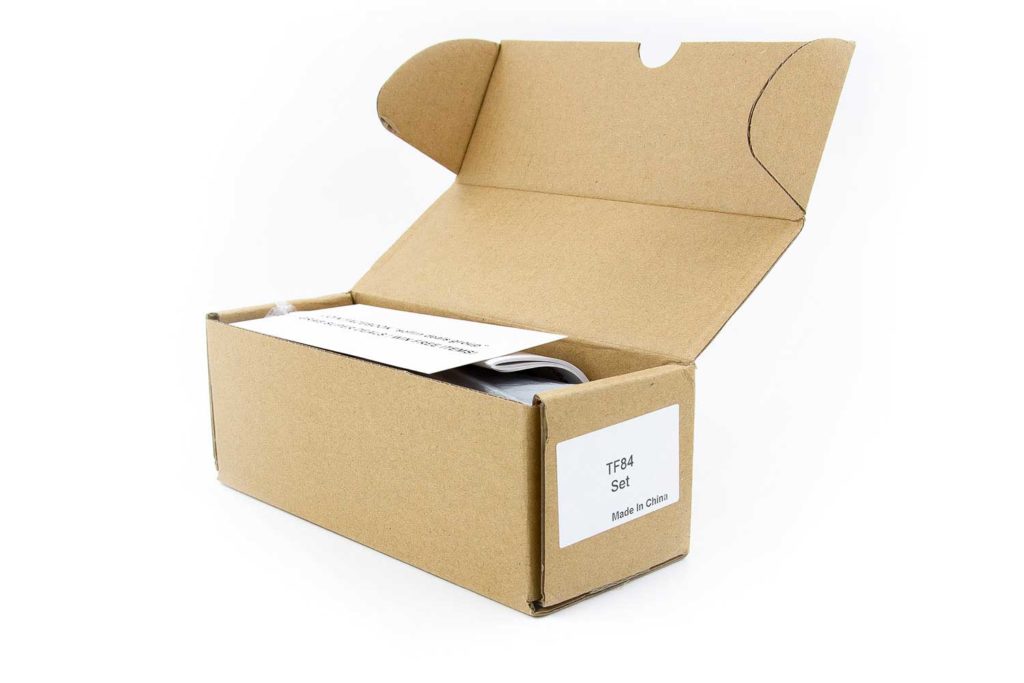
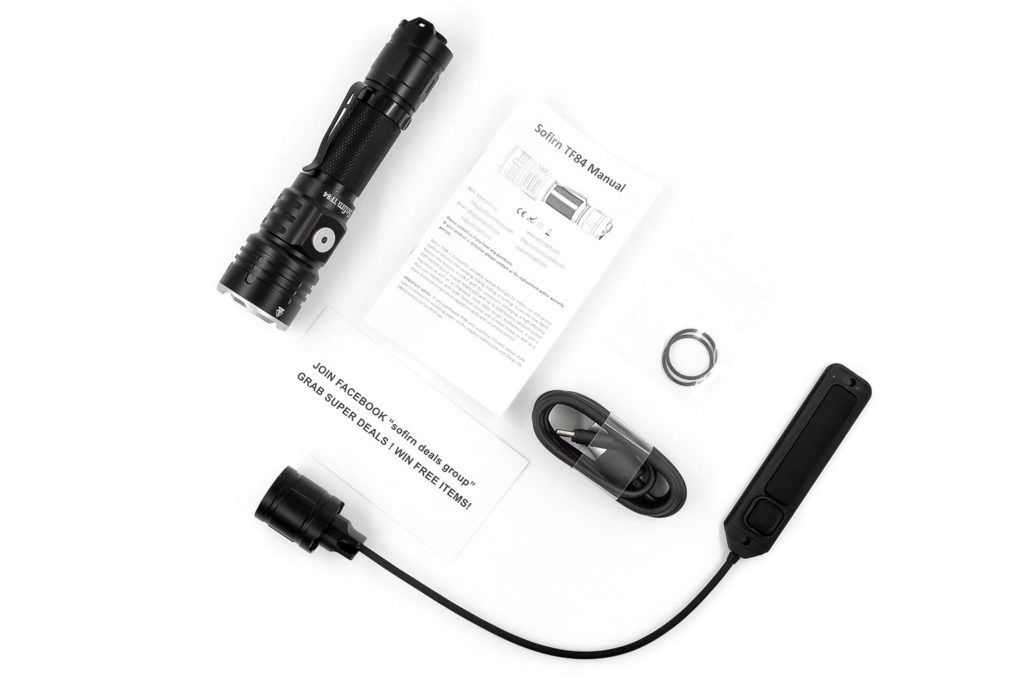
Flashlight in use
The TF84 is a little smaller than I initially expected based on the photos, but fits in my hand quite neatly. It’s fairly smooth to grip, with the knurling giving some texture.
It can be held easily in an over-arm fashion as is expected with a tactical light, or underhand like a more EDC light. It’s possible to do most of the functions on the light in either holding method, but there’s a few functions that are specific to one way or another, which I will go into in the UI section.
The side button has quite a bit of movement before it activates – I would have preferred for it to activate almost immediately, as the movement makes it feel somewhat spongy. The switch under the button itself has a decent feel, though; it’s just the initial travel of the button cap that gives the odd feeling.
The primary tail button is a forward clicky, providing momentary-on. That said – it can shift sideways a bit. It feels good when pressing down, but if you press sideways on it, moving it away from the tail mode switch, there’s a bit of a click and a “shift” feeling. It can also make the panel that the tail mode switch is on shift sideways.
The remote switch included in the kit gives the ability to mount this to a weapon – the small square button is raised, and replicates the primary tail switch. The longer button is low profile and replicates the mode button, but only activates in the middle – this button could have been much smaller as a result, and ensuring that there’s always activation when pressing on it.
The attached clip is a friction clip that appears very solidly connected, and the metal is quite stiff; it will slide on and off something like a belt quite well, and will grip on very tightly.
Tailstanding:
It’s possible, but quite unstable. The highest points of the tailcap are quite small, and even putting it down gently, it rocks back and forth a little.
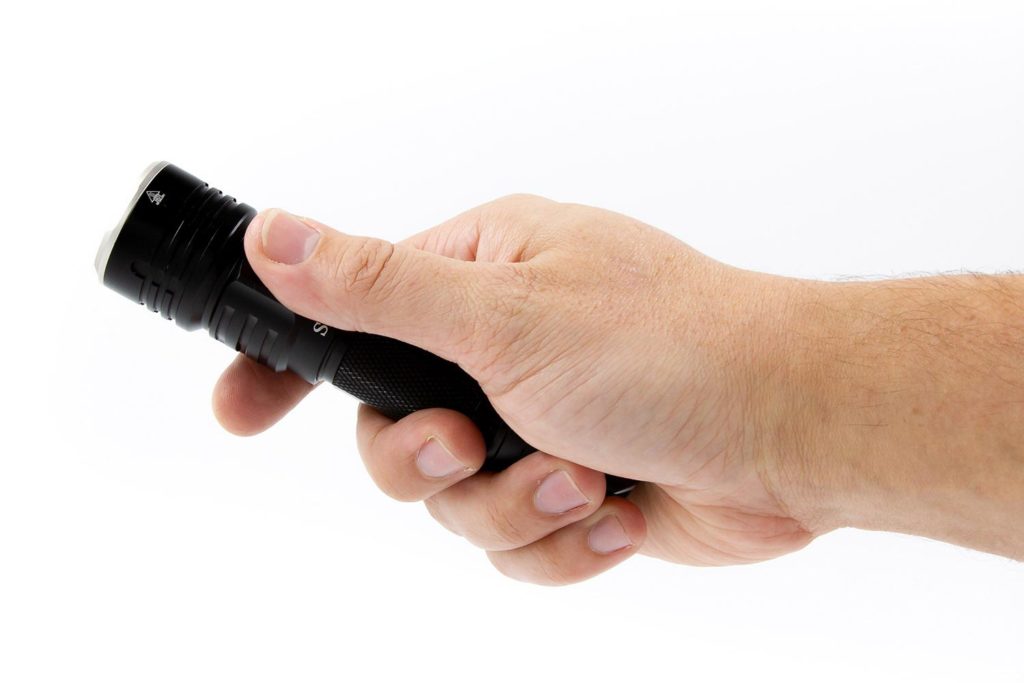
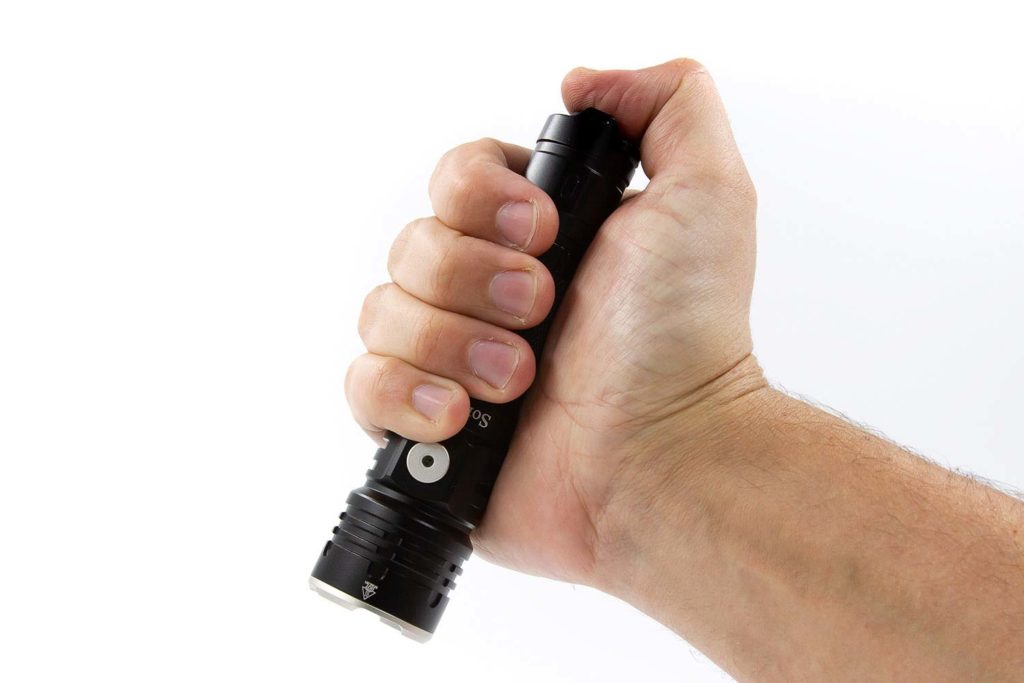
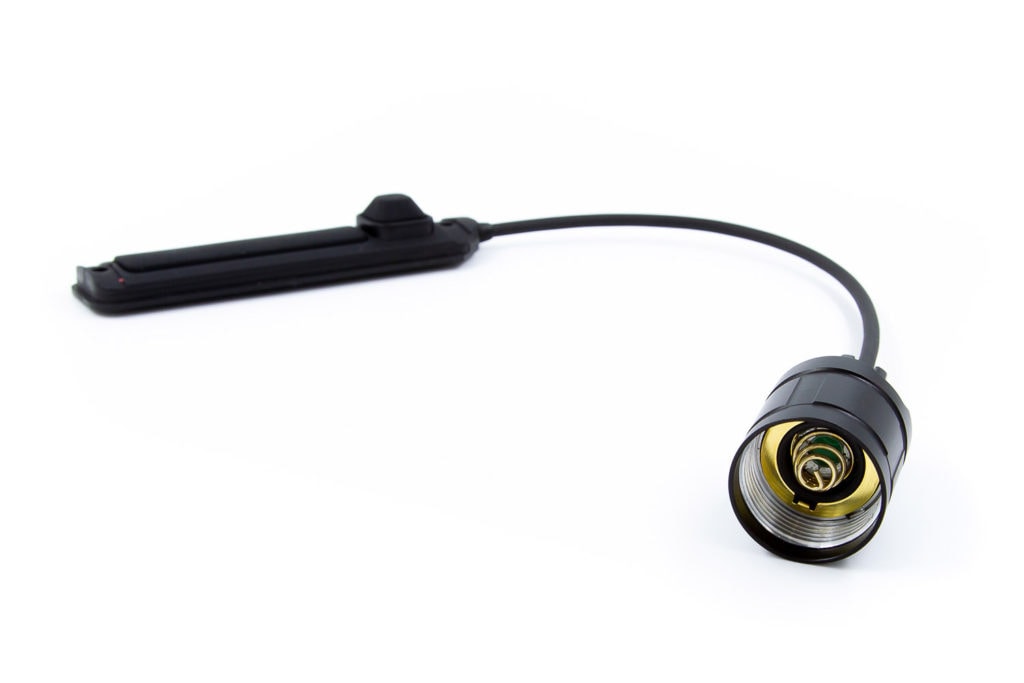
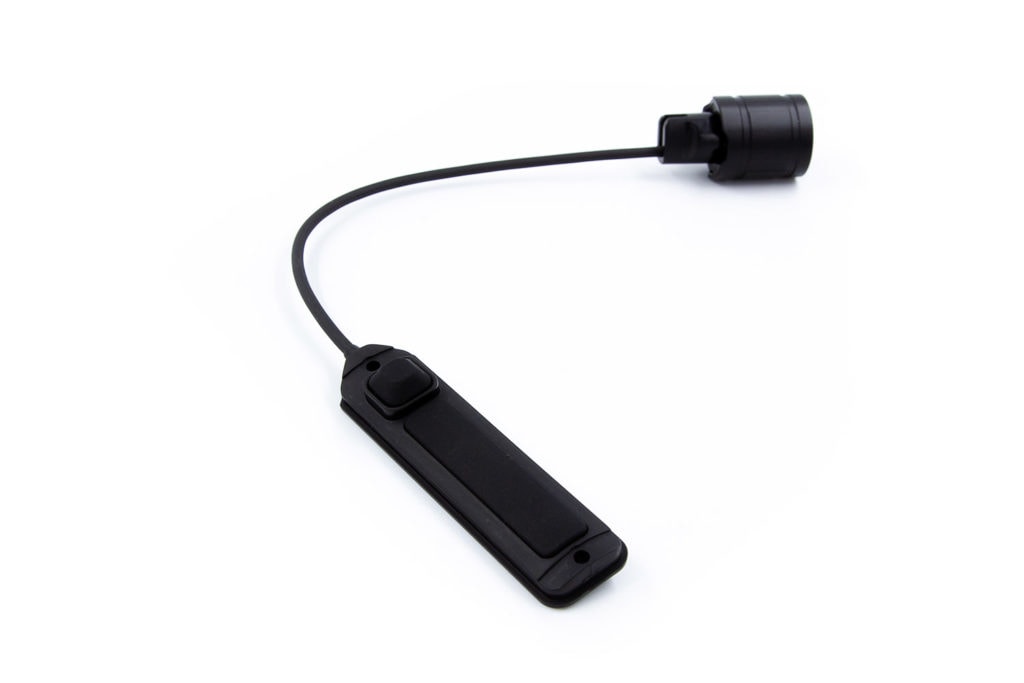
Build Quality, and Warranty
Sofirn have built the TF84 out of aluminium as is fairly expected, but the thing that gives me pause is the bezel. It looks like anodised aluminum, but it’s slightly different, and I can’t work out if it’s coated stainless. The anodisation is fairly standard for Sofirn; perfectly serviceable and neat, with no imperfections that I can see.
The knurling on the body is quite smooth, but still has a bit of texture to it. Extra grip is provided by the flat surfaces around the knurling; there’s three thinner flat surfaces with wider knurled surfaces between them. Keeping the clip in place gives an even better place to curl your fingers around, as it helps lock the light in position.
The fins on the head are 90 degree cuts, but aren’t sharp – there’s a fair bit of hold there, but you won’t tear your hands up (always nice).
Everything bar the tailcap appears to be glued; the body tube is glued in place, as is the bezel. This is probably for the best, as keeping moving parts to a minimum is a good thing in a tactical light. The body tube being glued in place means that the signal tube won’t move around, which has been a massive point of contention for other lights with a signal tube.
I feel like this is a light I could drop and pick up in perfect working order without any problems, but I’m hesitant to do so – I don’t particularly like damaging lights if I don’t have to!
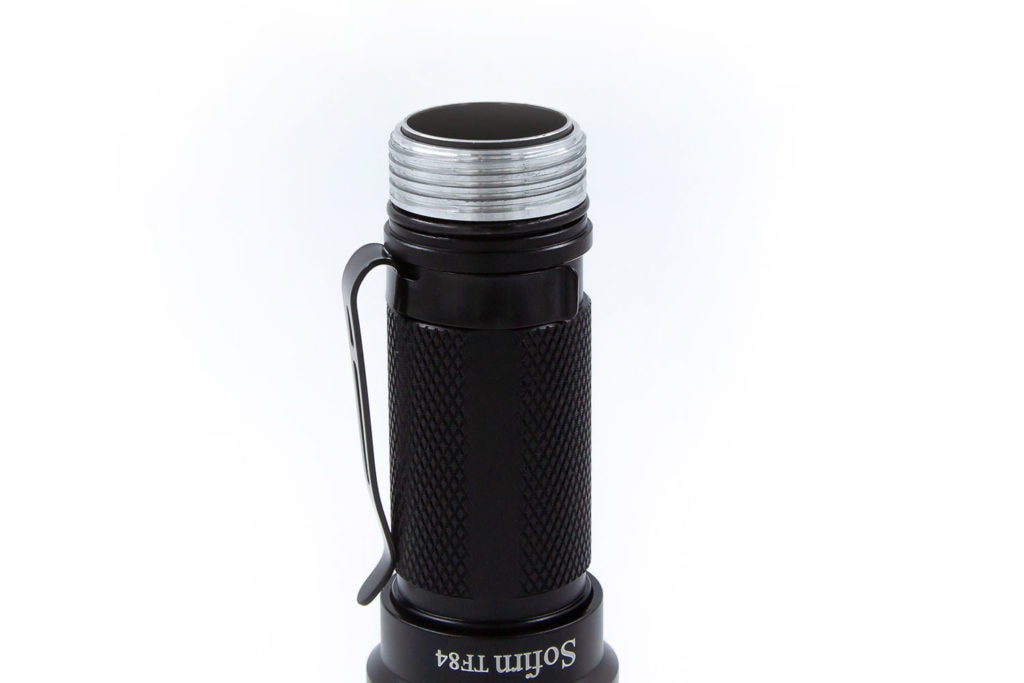
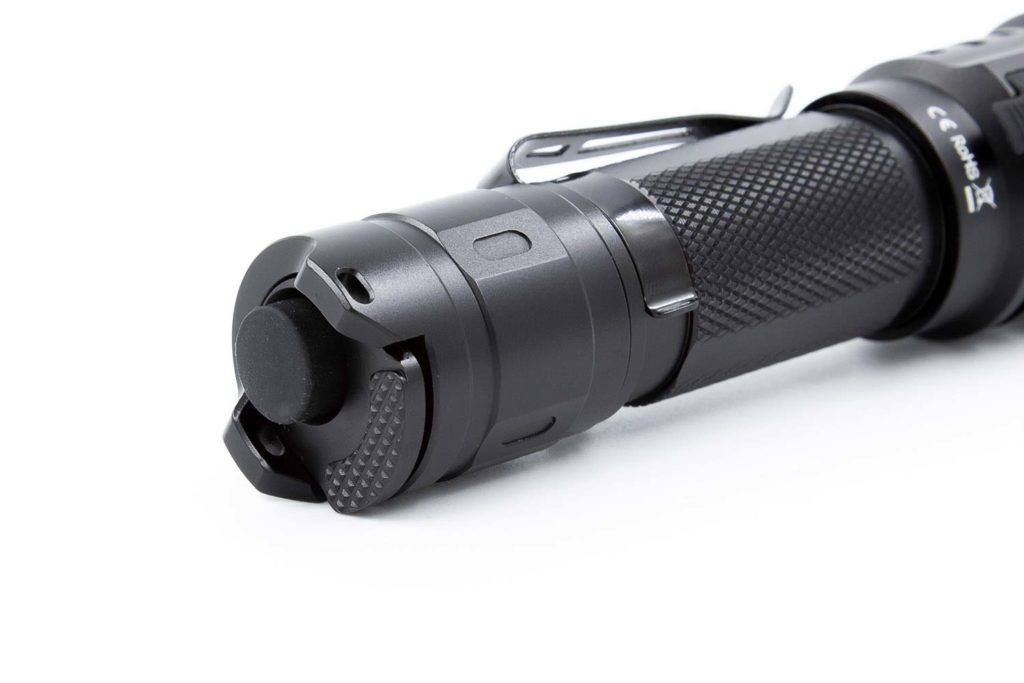
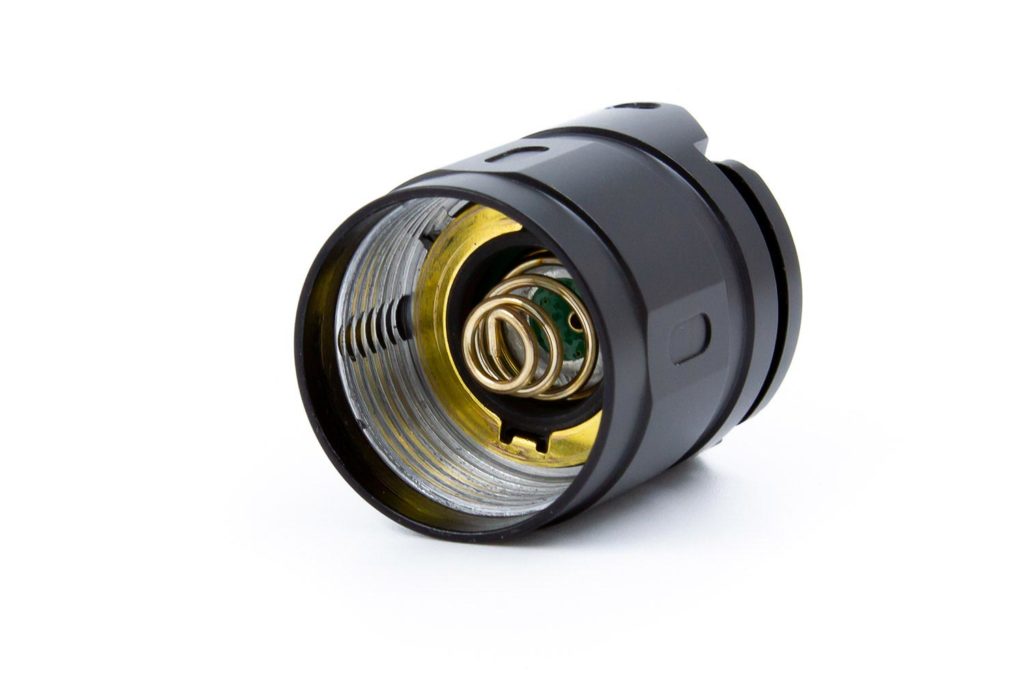
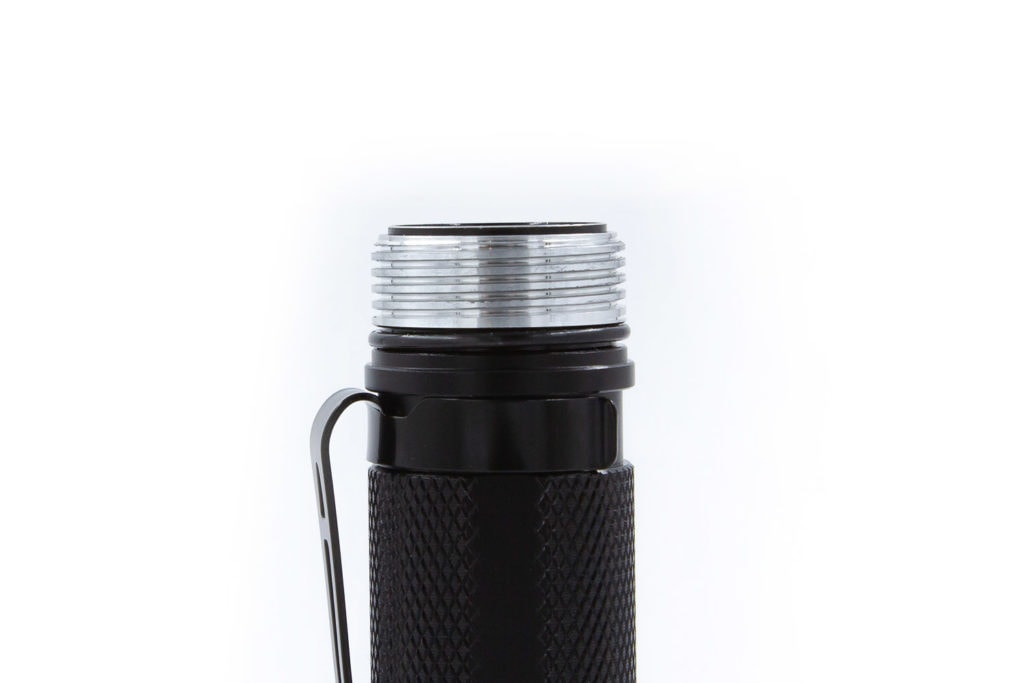
LED, Lens, Bezel, and Reflector
Probably the biggest part of the appeal of this light to me comes from the emitter choice – the Samsung LH351D 5000K in 90CRI. This is a much more comforting beam than any other tactical light I can think of off the top of my head, apart from my own modified lights (but that’s a different story).
It’s a floodier emitter than a lot of others in tactical lights, so this is a double-edged sword. On one side, the emitters throws less than others, but on the other, the hotspot is wider. It would really depend on your use case as to whether this is a positive or negative, but I feel like it’s a positive.
Holding this in place is a smooth reflector that’s a little wider than in a lot of tactical lights. My measurements on the reflector itself are around 26mm, so coupled with the floody emitter, the hotspot is lovely.
Topping it off, a lightly crenulated bezel gives a stepped outer edge to the beam, but not noticeable while in the outdoors – it’s at the very edges of the spill. Interestingly enough, there’s four crenulations – not a pattern I’ve noticed in another light, where it’s usually an odd number. It doesn’t detract, but it’s something of note.
Unfortunately, at least to me, this is all glued in place, making emitter swaps impossible, if you really wanted to. Again, just something of note, as I very much doubt anyone interested in tactical lights would be going too far into the modification side of things.
While you could hit someone with it if you really wanted to, it’s probably not the best idea, as it appears to be made of aluminum and could deform easily on hitting something hard – it’d still do some damage, though.
One thing to note is that the head never really gets hot – it gets warm to the touch, but never to the point of feeling what I would call “hot”.
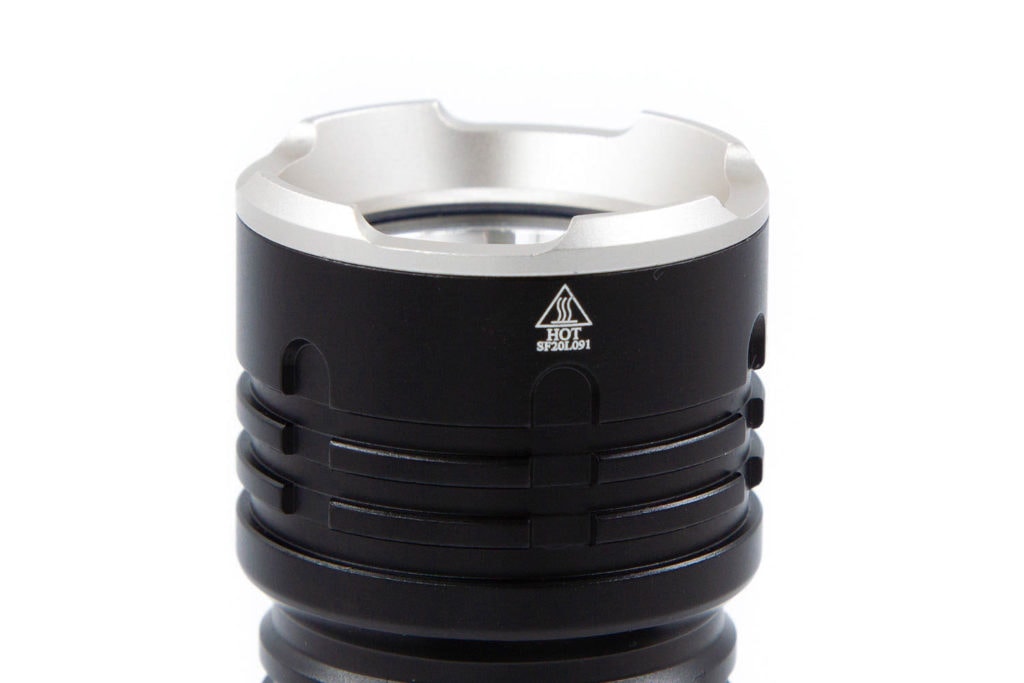
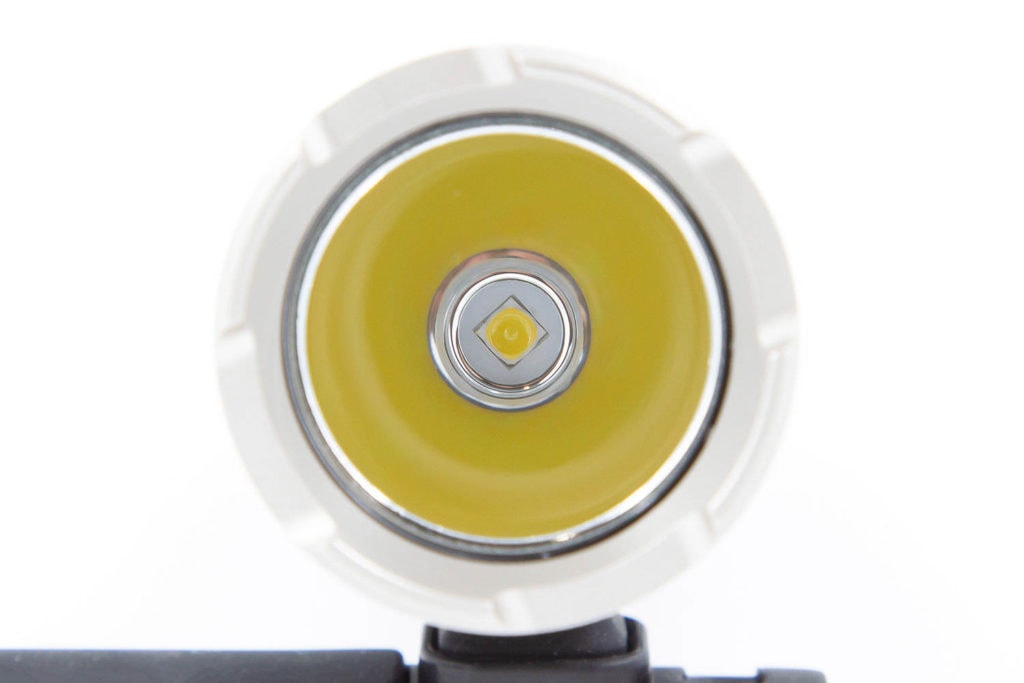
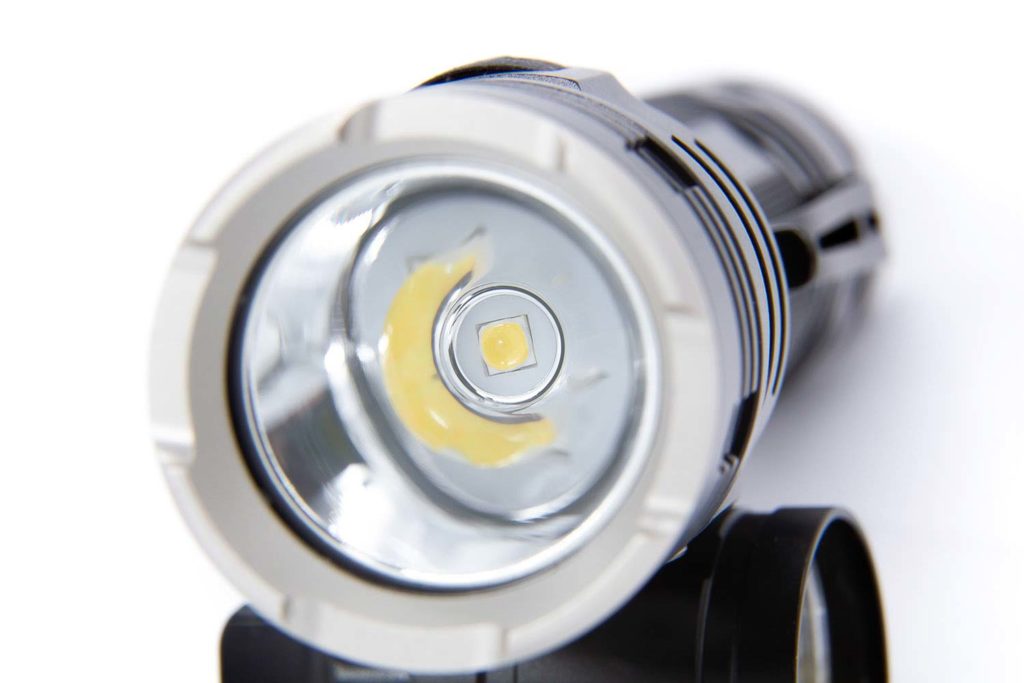
Dimensions and size comparison
- Length: 143mm (5.63″)
- Head diameter: 35mm (1.38”)
- Body diameter: 25mm (0.98”)
Weight:
- Empty: 118.4g (4.18 oz)
- With cells: 166.8g (5.88 oz)
Tactical Flashlights size comparison
Size compared to other popular Tactical (military) flashlights
Image 1, from left to right: Nitecore P20i, Sofirn TF84, Klarus XT11GT pro
Image 2, from left to right: Jetbeam PC20, Sofirn TF84, Nitecore MH12s
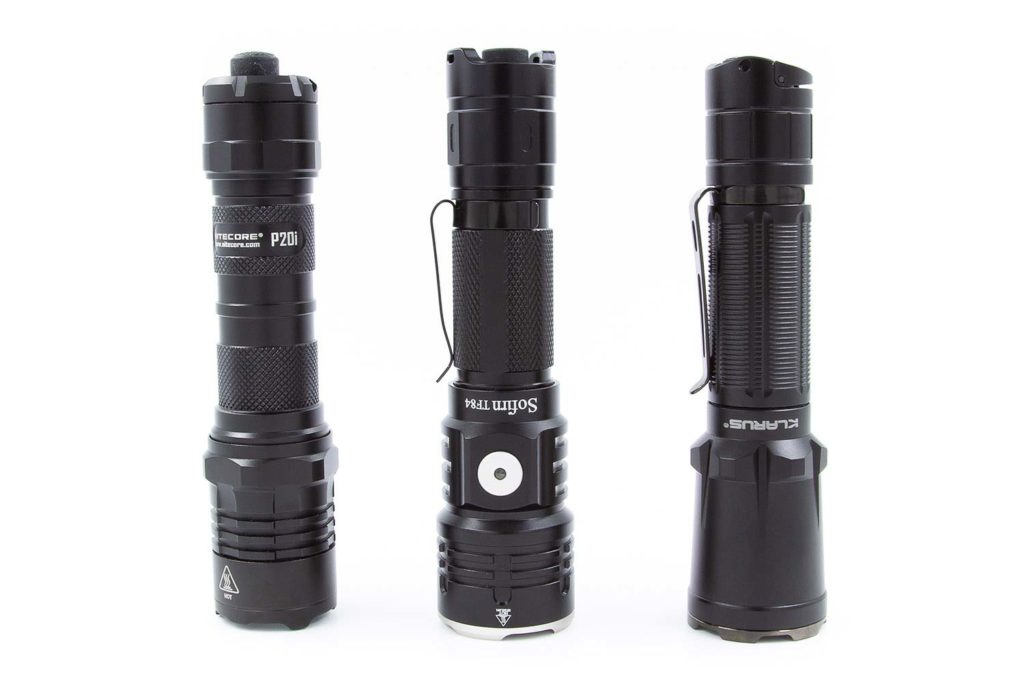
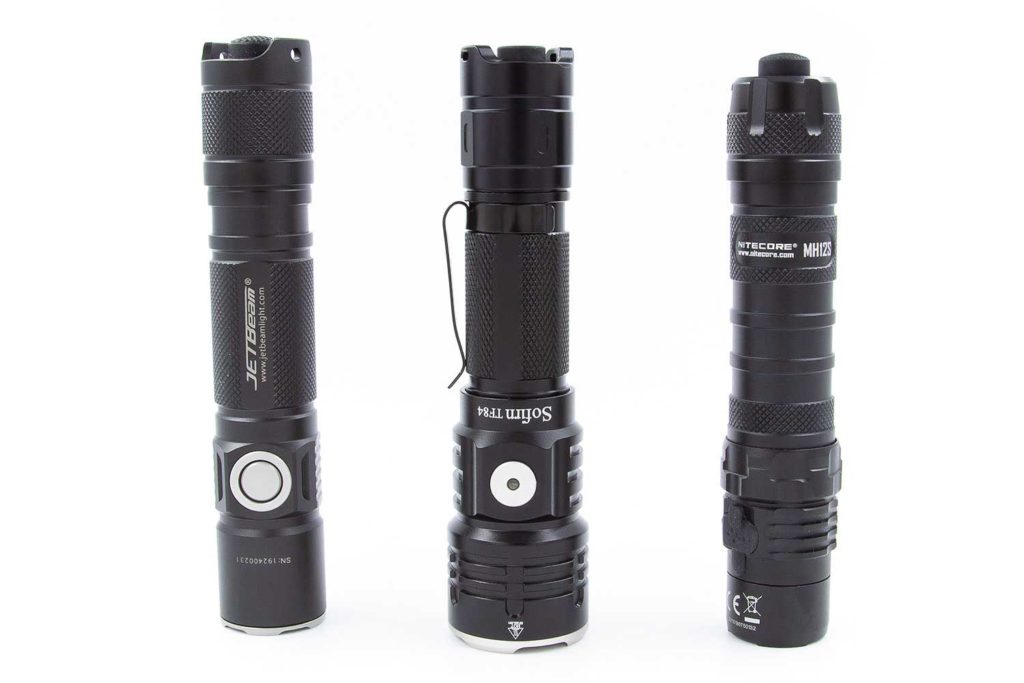
Driver & User Interface:
The UI on this light is far more complicated than other Sofirn lights, and that’s mostly due to the triple-button layout. This isn’t inherently a bad thing, but it’ll take a little time to familiarise yourself with – it certainly did for me!
The complicating factor here is that this light has three switches, compared to two on something like the SP31 V2.0. That said, each of them has a very distinct purpose, as I’ll detail below.
As with other tactical lights, there’s two overarching modes – Outdoor (which is the default), and Tactical.
I’ll start off with some acronyms I’ll be using:
TS: Tail Switch
TMS: Tail Mode Switch
SS: Side Switch
To toggle between modes: when off, hold SS and TMS for three seconds. You’ll see one blink when going Outdoor to Tactical, or three blinks when going back to Outdoor.
OUTDOOR
FROM OFF
- Half-press TS for momentary, full activation for on.
- Hold TMS for less than 2 seconds for momentary strobe; after two seconds it stays on. Press TMS again to turn off.
- Press SS to turn on.
- Hold SS to enter moonlight (1lm) mode.
- Press SS four times to enter lockout mode. See notes below for something interesting about this…
FROM ON (with caveats):
- Press TMS to change L/M/H/T. Press and hold to enter Strobe, press again to turn off.
- Press SS to change L/M/H/T. Note that this can’t change modes as fast as TMS (more below).
- Double-click SS to enter strobe, click to cycle through Strobe/SOS/Beacon. Double-click again to return to normal “on”.
If the TS is activated, press TS to turn off. If not, hold SS to turn off.
Basically – TS “on” will override SS “on”.
TACTICAL
Same as outdoor, but modes are only H/T (with the exception of moonlight from off with side switch).
Mode memory:
- Mode memory is only available when turning the light on via the side-switch – turning it on via the tail switch defaults to Turbo.
Low voltage warning:
- The light on the side-switch repeats a short red flash when the battery reaches below 3V, and turned off completely at 2.56V. This would most likely be different with CR123A, but this is outside the scope of my testing.
Strobe/blinkies
- There’s Strobe/SOS/Beacon; these are activated by double-pressing the side button, or only Strobe via the rear mode switch.
Lock-out mode:
- You can lock out the light as mentioned above via four clicks on the side switch, but this only locks out the side switch itself. The light can still be used completely via the rear switches; it’s only the side switch that’s deactivated. To lock the tail switches out too, unscrew the tailcap ¼ turn.
PWM
- Interestingly enough, there appears to be PWM only on the “low” mode. Moonlight, Medium, High, and Turbo all appear PWM-free when looking at the emitter through my phone’s camera, but Low has visible banding.
Batteries & Charging
The Sofirn TF84 can be run on either 18650 or two CR123 cells in series, giving you options as to how to run it. I’ve seen mention of CR123A cells being provided by law enforcement, so that may be a perfectly viable option.
The USB-C port is covered by the usual Sofirn charging-port flap; this pops out and swings out of the way giving access to the port. It sits out slightly from the body, so it’s possible to catch it on things as it slides past.
The 3000mAh cell bundled with the light is the usual Sofirn cell you’ll find in any of their 18650 kits – perfectly serviceable, and can provide up to 10A if needed. One note though is that it’s very slightly smaller diameter than the tube, so there’s a little bit of rattling if you tap on the side of the light. Putting a small slip of paper in there to fill the gap will stop this, though – very easy to work around.
The cable included is a USB-A to C cable, but you can also charge via USB-C PD. When charging either via USB-A to C or C-to-C, I get around 1A.
As with all tactical lights with inbuilt charging, don’t try and charge CR123 cells!
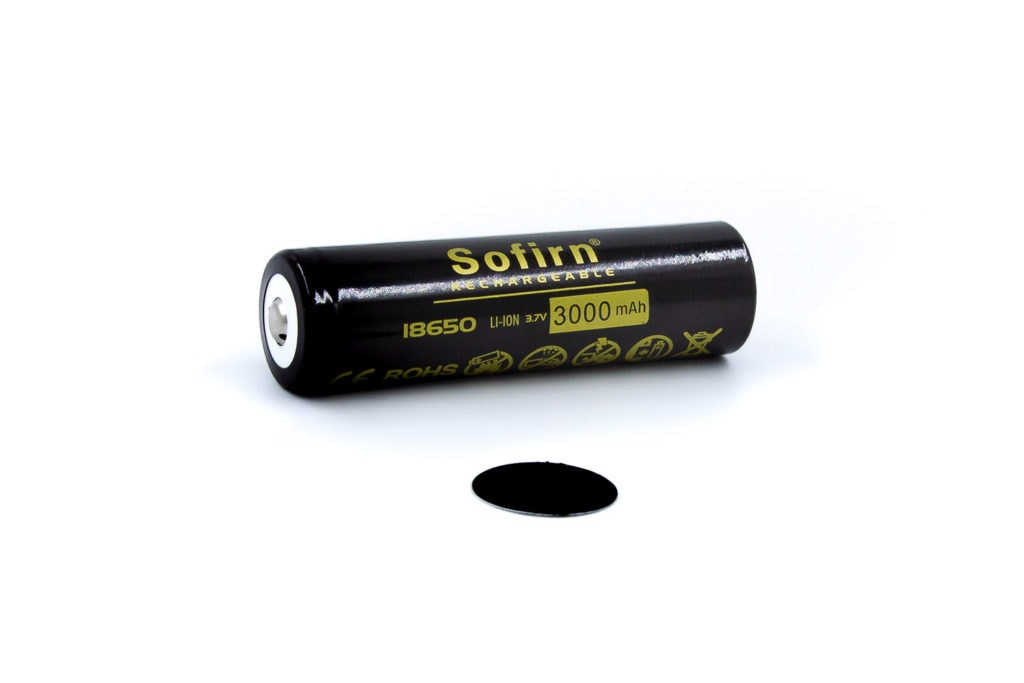
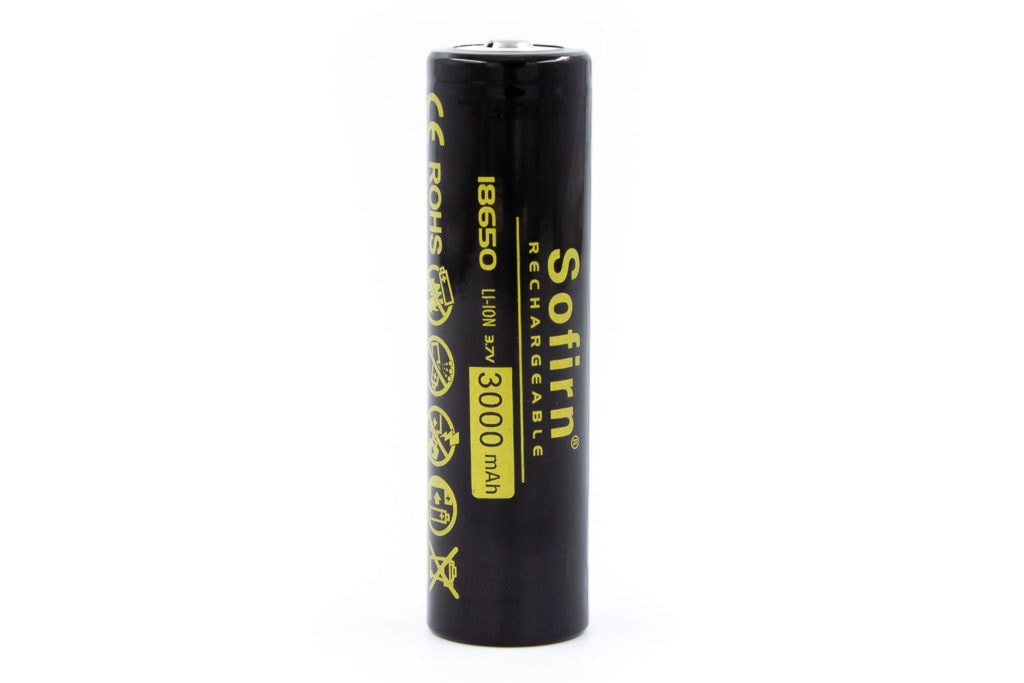
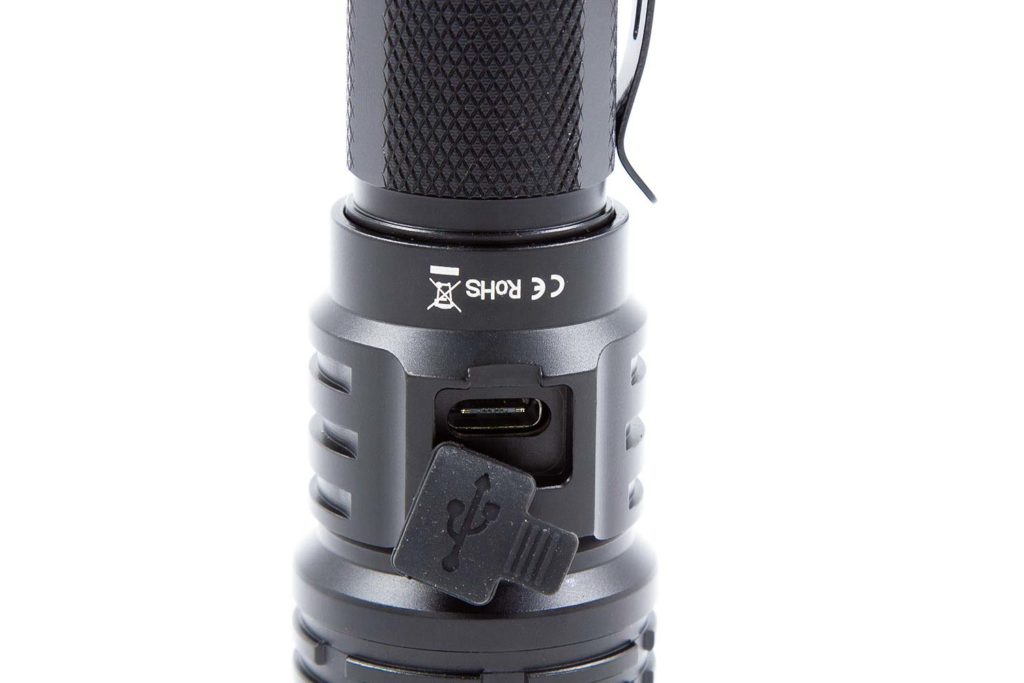
Performance
For my readings, I use the following:
Lux Meter: For lumen readings and runtimes, an Adafruit TSL2591 connected to a Raspberry Pi running Ubuntu, using RuTiTe by bmengineer in a custom integrating sphere. A UNI-T UT383S is used for candela readings. An Adafruit MCP9808 rounds out the list for temperature monitoring when I feel it’s relevant.
DMM: UNI-T UT139C and UNI-T UT210E – 16AWG wire is used directly in the 139C via some banana plugs, and 8AWG wire in a loop for the UNI-T. The DMM I use depends on how high the expected current will be – I use the 139C for <10A, and the 210E for >10A.
There’s some difference in output between the two battery chemistries, but due to my long-held beliefs about the environmental impact of disposable cells, I’ll only be testing with the 18650 included with the light.
Amp measurement
Measurements are taken from the tailcap.
- Standby: 0.07mA
- Moonlight: 5.6mA
- Low: 15.8mA
- Med: 309mA
- High: 800mA
- Turbo: 2.6A
The current at Turbo is somewhat lower than I expected, but let’s see how that translates.
Runtime graph
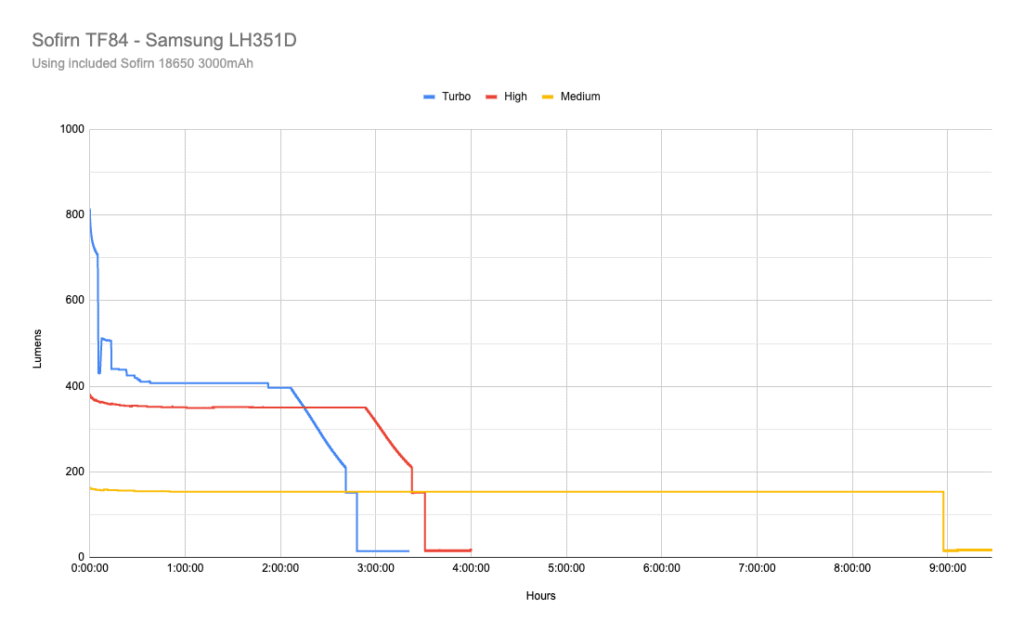
This chart somewhat preempts the next section – as you can see, Turbo doesn’t hit anywhere near the 1200 lumens as advertised, and I’ll go into that soon. There’s also solid proof of the buck driver – the flat regulated sections really hold their output, which is great.
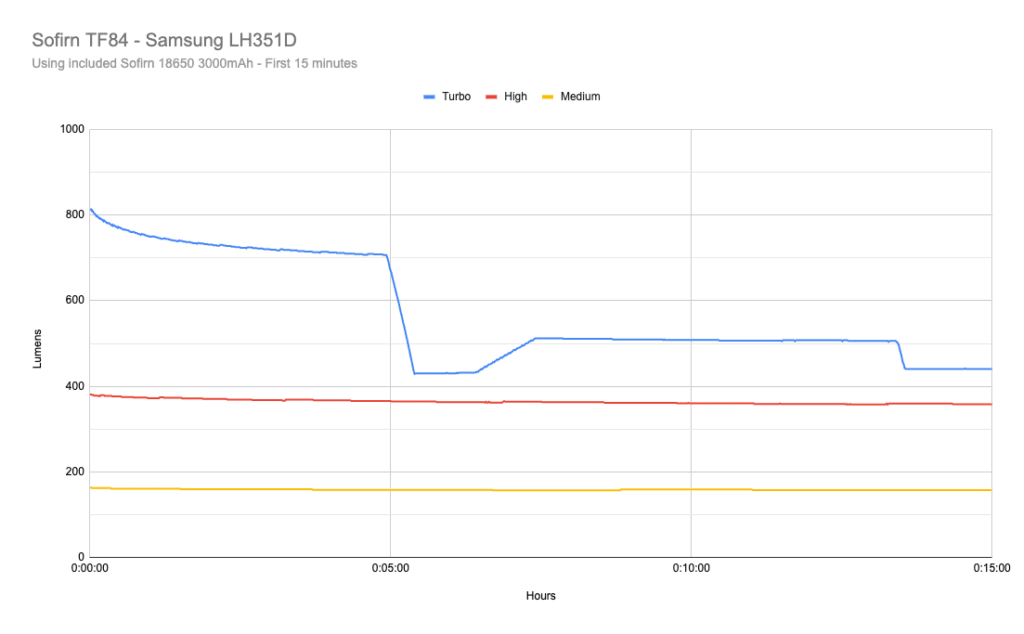
Runtimes are similar to the stated runtimes though, until the final drop to Low.
Lumen measurements (for each mode)
Charging the cell to full and then cycling through the modes, the highest measurements I get are:
- Moonlight: 1 Lm
- Low: 20 Lm
- Medium: 165 Lm
- High: 388 Lm
- Turbo: 881 Lm
I’m not surprised at all that the Turbo lumens are at the level they are – an LH351D 70CRI at 3A has been shown in tests to make around 1100 lumens, yet this is a 90CRI emitter running at a lower current, at least at the tailcap.
Low is rated at 10 lumens, Medium at 150, and High at 450 – there’s a decent amount of variation around the advertised levels and the output I get on a full cell.
Throw numbers:
Throw numbers were tested with a fully charged battery, and the maximum candela rating that my lux meter recorded in Turbo.
- 5m indoors: 460 lux = 11,500 cd = 214.48m throw
- 10m outdoors: 116 lux = 11,600 cd = 215.41m throw
Given that the rating on this for an 18650 is 199.1m (9910cd), I’m quite impressed with it.
Beamshots
All beamshots taken at 1.0s, f8.0, ISO 100, 5000K WB; straight off the camera with no adjustment in post. Lights are approximately 3m from the garage door.
- Sofirn TF84 (LH351D 5000K) – Low, Medium, High, Turbo
- Nitecore P20i (SST40 6500K) – Turbo
- Klarus X11GT Pro (XHP35 HD 6500K) – Turbo
Comparison:
- Nitecore P20i, Sofirn TF84, Klarus XT11GT Pro
- Jetbeam PC20, Sofirn TF84, Nitecore MH12S
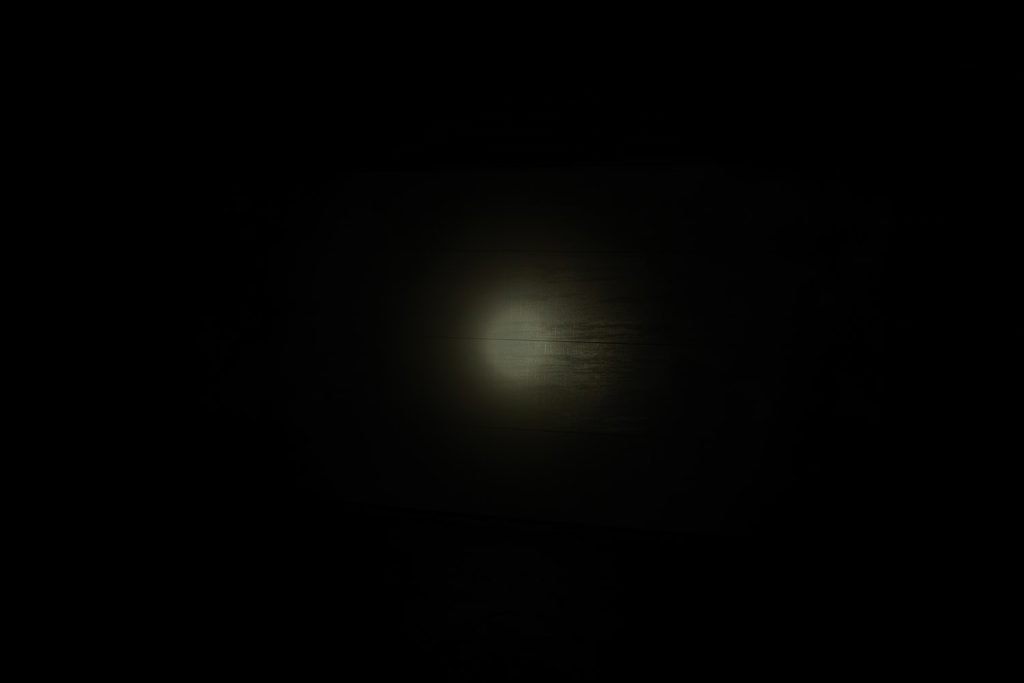
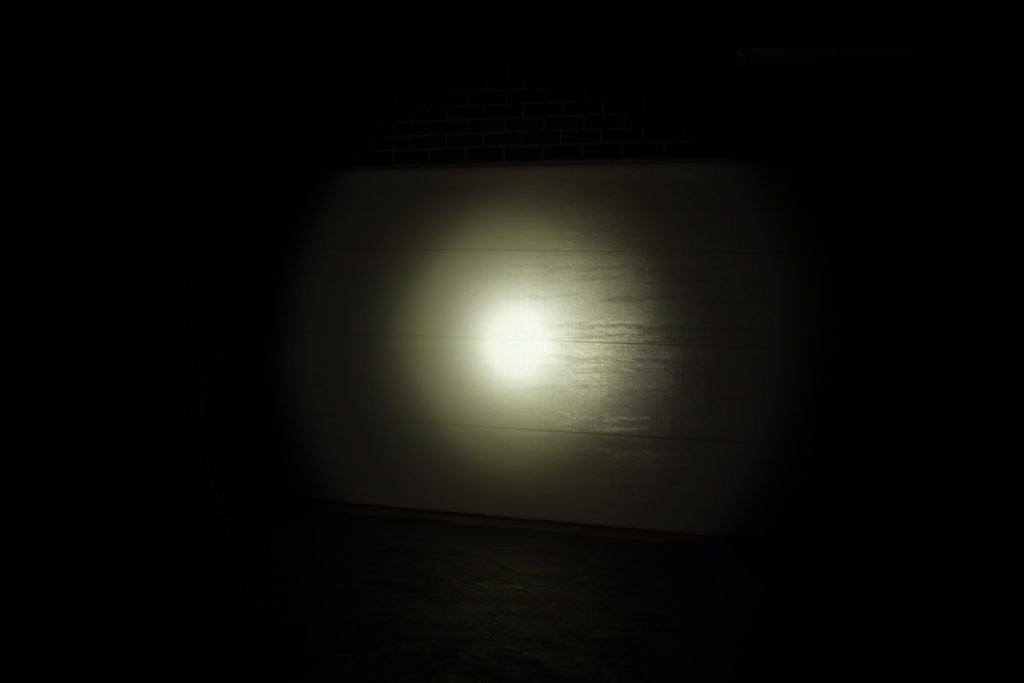
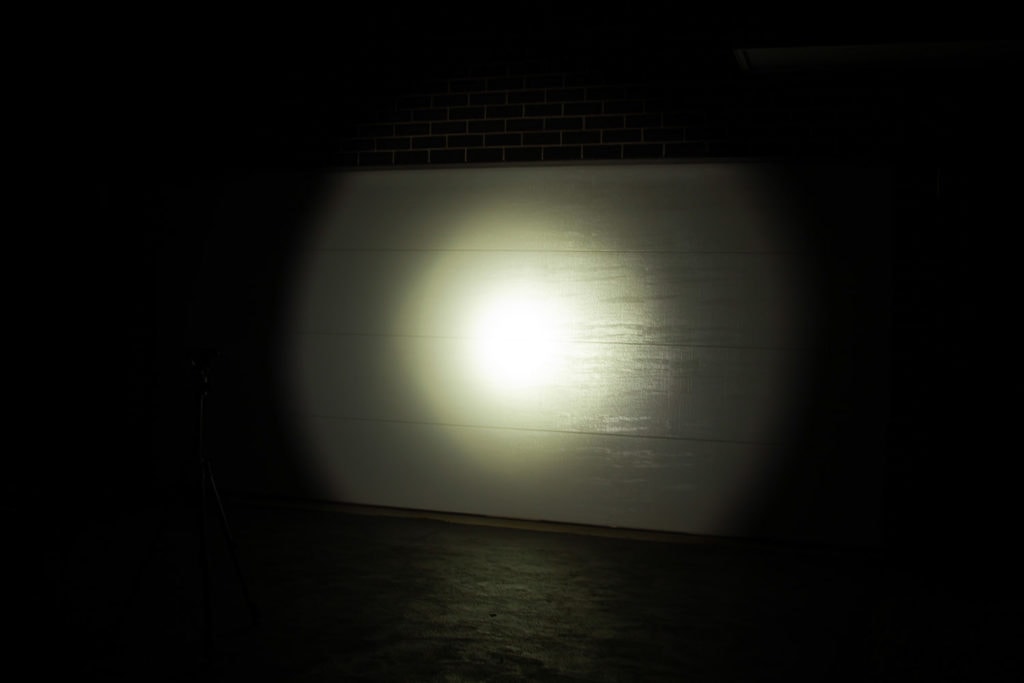
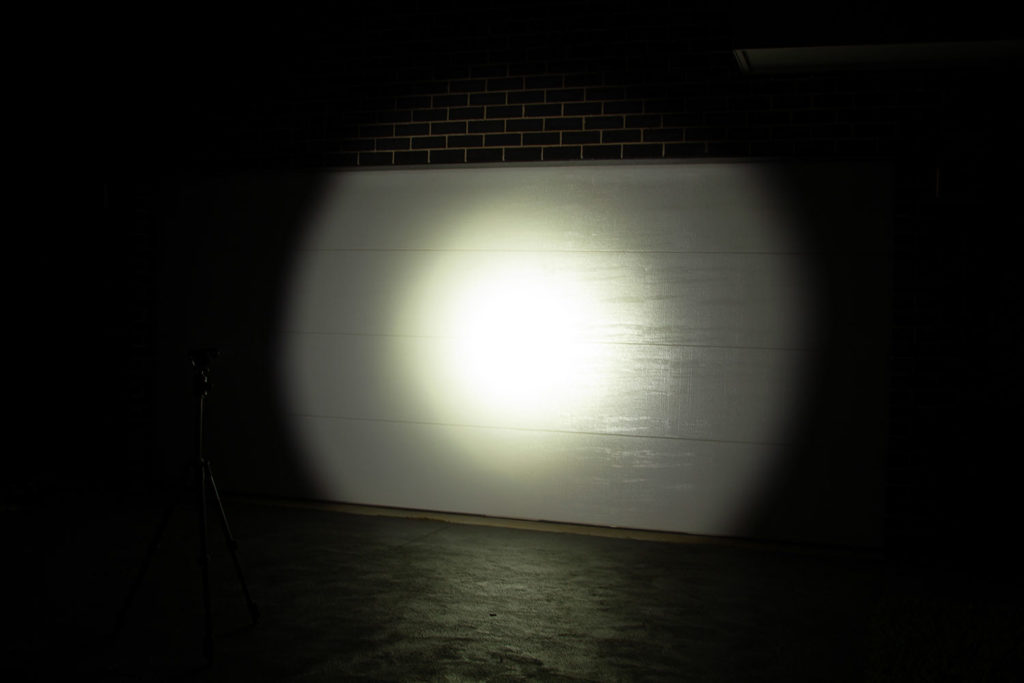
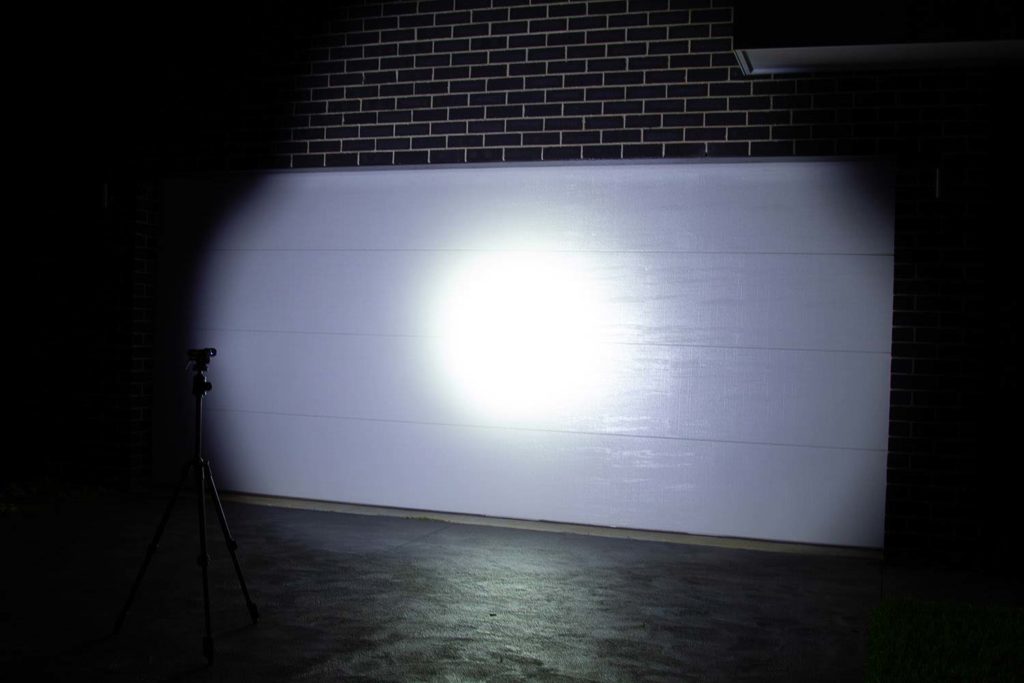
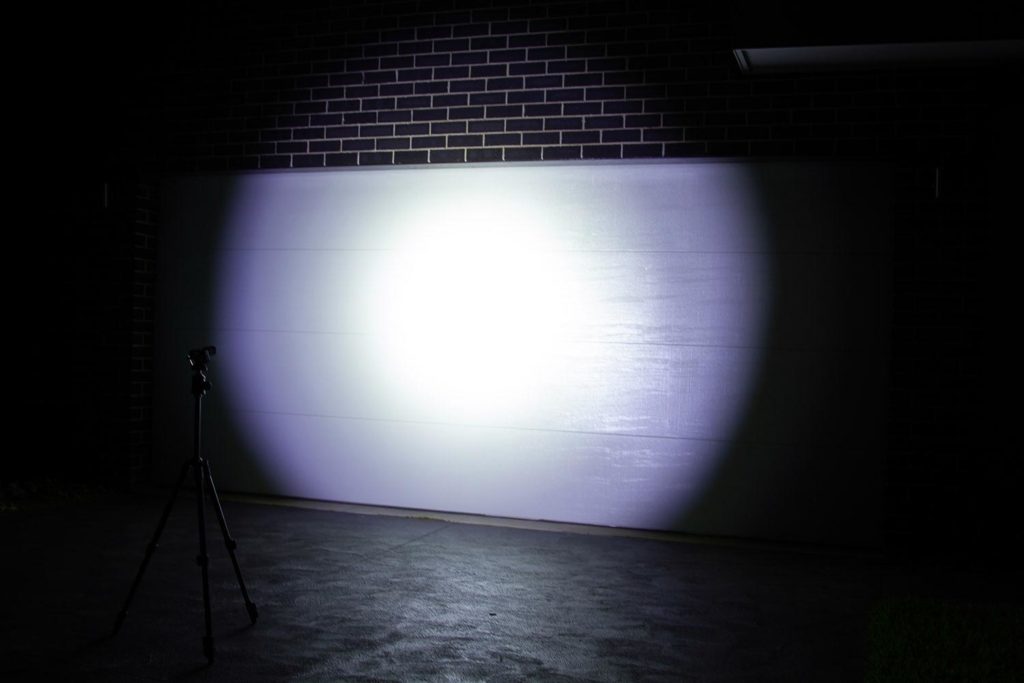
Disclaimer: This flashlight was sent to me for review at no cost by Sofirn. I have not been paid to review, nor have I been holding back on problems or defects.
Explanation on star ratings:
- – Avoid: my phone flashlight would be a better choice
- – Poor: significant defect or issues, much better options available at the same price
- – Average: some defects or issues
- – Good: recommended (minor issues)
- – Great: highly recommended
Final Verdict
Pros
- High CRI in a tactical light!
- Warm CCT in a tactical light!
- Onboard charging
Cons
- “Soft” buttons
- Overstated output
- Excessively complicated UI due to three buttons

3.5 stars: ★★★⋆
This is somewhat painful.
On one hand, this isn’t inherently a bad tactical light. There’s things to like about it, especially the choice of emitter which I’ve been crying out for, for some time, and quick access to strobe, if that’s your thing.
On the other hand, at the price point it’s advertised at ($61.99 USD for the kit I received on sofirnlight.com, though I’ve seen a lot of discount codes for it), I expected a bit more finesse to the build. The tailcap mode and power button movement is fairly off-putting, as is the inflated lumen count – though I could easily see that just being miscommunication between departments at Sofirn (after all, a 5000K LH351D can put out close to 1200 lumens, but in 70CRI).
I can see what Sofirn was going for with the three-button setup, but I think this should have been a two-button setup, similar to other tactical lights. This would cut down on confusion with entering modes, and the side and tail mode buttons doing similar but different things.
There’s a lot of potential here that with some tweaking could make a fine tactical light, but in its current state, to me it’s a 3.5 star light.
Sofirn TF84 For Sale
Not available anymore. Check out the following buyers guides, and collections instead:
- Buyers guide: the best tactical flashlight
- Overview: all Sofirn flashlight reviews
1lumen selects and reviews products personally. We may earn affiliate commissions through our links, which help support our testing.